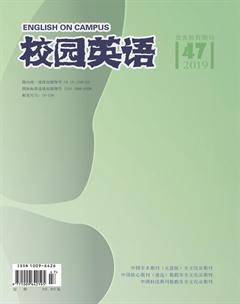Usefulness of Dale’s Cone of Experience in the Context of Learning
Menglu HU
Ⅰ.What Cone of Experience Is
Experiences vary from sensing concrete objects to indirect sensing abstract symbols and concepts. These experiences could be classified into levels according to their degree to abstractness (Dale, 1946). A modal called Cone of Experience, developed by Dale (1946), demonstrates the varied experiences, from direct, firsthand participation to pictorial representation and on to purely symbolic expression. This ten-band pyramid is divided into three stages in accordance with their degree to abstractness which is characterized respectively by doing, observing and symbolizing. The bottom stage features “doing”, which includes contrived experiences and participation. The middle stage consists of less direct experiences, which commonly characterizes observing as a learning method. The pinnacle stage is the most abstract area; visual and verbal symbols are the main representatives of this section. The model explains connections of sensory experiences and classifies them by ranking them from concrete to abstract. It aims to ‘provide a visual analogy of the type of experiences that influence the learning process (Garrett, 1977, p. 130). Moreover, the Cone suggests that learning would be more meaningful and effective when the abstract are combined with concrete experiences (Seels, 1997).
Moreover, Dale expressed that ‘no mistaking our cone-device for a hierarchy or rank order of learning processes (1946, p. 47), no learning experiences should ‘travel up from the bottom to the top. Sensory experiences were mixed; types of sensory experiences work collaboratively in learning activities. The emphasis should be on evaluating the effectiveness of applying appropriate sensory methods in different situations. More importantly, as ‘the different kind of sensory aids often inter-lap and blend into one another, the boundaries between bands are blurred (Dale, 1946, p. 37). The Cone should not be viewed as a rigid and inflexible. Instead, it could be better used as a generalized visual analogy, providing flexibility to explain relationships between the types of sensory experiences.
Ⅱ.Usefulness
The significance of the Cone remains in giving instructions and providing theoretical background for Experiential Theory. Cone of Experience is valuable in giving instructions as it is the foundation of instructional design theory and supplemental instructions.
Value of the Cone in the field of instructional design theory lies on its historical importance in connecting instructional theory with communicative media. It classifies media instructional devices as degrees of abstractness and connects learners media experiences with their psychological learning dimensions. Also, it gives theoretical outlines for instructional design theory in selecting instructional media devices while facing learners with diverse psychological needs. However, there is currently no consensus among the application of multimedia devices in the context of learning, Audio-Visual aids applied in education may not work well for all learners. Researchers have found that dynamic visuals are not that helpful to some extent compared with static visuals. This may result from lacking previous knowledge enabling learners not engaging in learning activities, but not the issue of applying audio-visual devices self. In this case, applying multimedia devices itself deserves less criticism.
Experiential theory attaches importance to ‘doing in learning activities, which conforms to what the Cone advocates in a sense (Roberts, 2006). Employing the Cone in learning has been proved to be positive on students learning (Davis & Summers, 2015). By engaging in experiential learning activities, students take themselves as responsible subjects for learning rather than teachers; moreover, meaningful learning and retention could be achieved through active participation. For teachers, they take students feedbacks as references for designing further learning activities. Consequently, more appropriate experiential learning could be developed.
References:
[1]Dale, E. (1946). Audiovisual methods in teaching. NY: Dryden Press.
[2]Davis, B., & Summers, M. (2015). Applying Dales Cone of Experience to increase learning and retention: A study of student learning in a foundational leadership course. Qscience proceedings, 6.
[3]Garrett, L. (1997). Dewey, Dale, and Bruner: Educational philosophy, experiential learning, and library school cataloging instruction. Journal of education for library and information science, 38(2) 129-136.
[4]Roberts, T. G. (2006). A philosophical examination of experiential learning theory for agricultural educators. Journal of Agricultural Education, 47(1), 17-29. DOI: 10.5032/jae.2006.01017.
【作者簡介】Menglu HU,Durham University.

